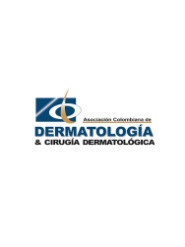Zinc y Piel
Resumen
El Zinc constituye un elemento importante y complementario en la terapia dermatológica de algunas condiciones definidas, como acné, alopecia, cicatrización, dermatitis atópica, y está involucrado en procesos metabólicos como crecimiento, reparación tisular y mecanismos de defensa cutáneos.
Biografía del autor/a
María Mélida Dúran M., Universidad Javeriana
Médica Dermatóloga, Universidad Javeriana, Bogotá, Colombia.
Referencias bibliográficas
2. Rebello T et al. The Effect of Oral Zinc Administration on Sebum Free Fatty Acids in Acne vulgaris. Acta Derm Venereol 1986; 66:305-310.
3. Bharjava Ret al . Dangers of Oral Zinc Therapy. lnt Jour Dermatol 1989; 28:205-206.
https://doi.org/10.1111/j.1365-4362.1989.tb02472.x
4. Michaelsson G et al. Patients with Dermatitis Herpetiformis, Acne, Psoriasis and Darier's Disease have low Epidermal Zinc Concentration. Acta Derm. Venereol 1990; 70:304-308.
5. Schachner L et al. A clinical tria! is comparing the safety and efficacy of a topical erythromycin-zinc formulation with a topical clindamycin formulation. J Am Acad Derm 1990; 22:489-495.
https://doi.org/10.1016/0190-9622(90)70069-T
6. Dreno B et al. Zinc Salts Effects on Granolocyte Zinc Concentration and Chemotaxis in Acne Patients. Acta Derm Venereol. 1992; 72:250-252.
7. Arroyo JF et al. Improvement of yellow nail syndrome with oral zinc supplementation. Clin Exp.Dermatol 1993; 18:62-64.
https://doi.org/10.1111/j.1365-2230.1993.tb00971.x
8. Lee AR et al. Zinc sulphadiazines: novel topical antimicrobial agents for burns. J Pharm Phmarmacol !995; 47:503-509.
https://doi.org/10.1111/j.2042-7158.1995.tb05839.x
Cómo citar
Descargas

Descargas
Publicado
Cómo citar
Número
Sección
| Estadísticas de artículo | |
|---|---|
| Vistas de resúmenes | |
| Vistas de PDF | |
| Descargas de PDF | |
| Vistas de HTML | |
| Otras vistas | |






